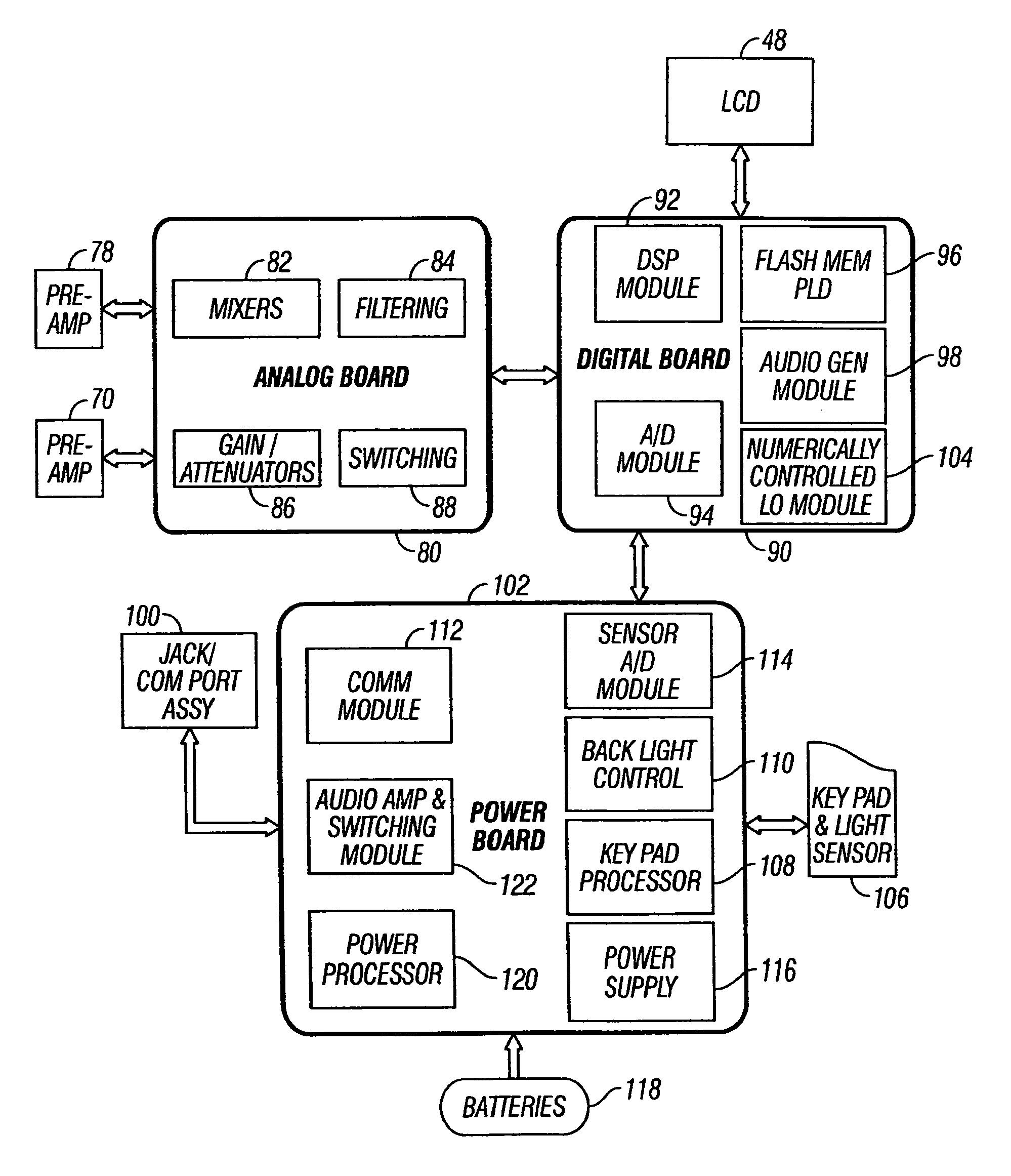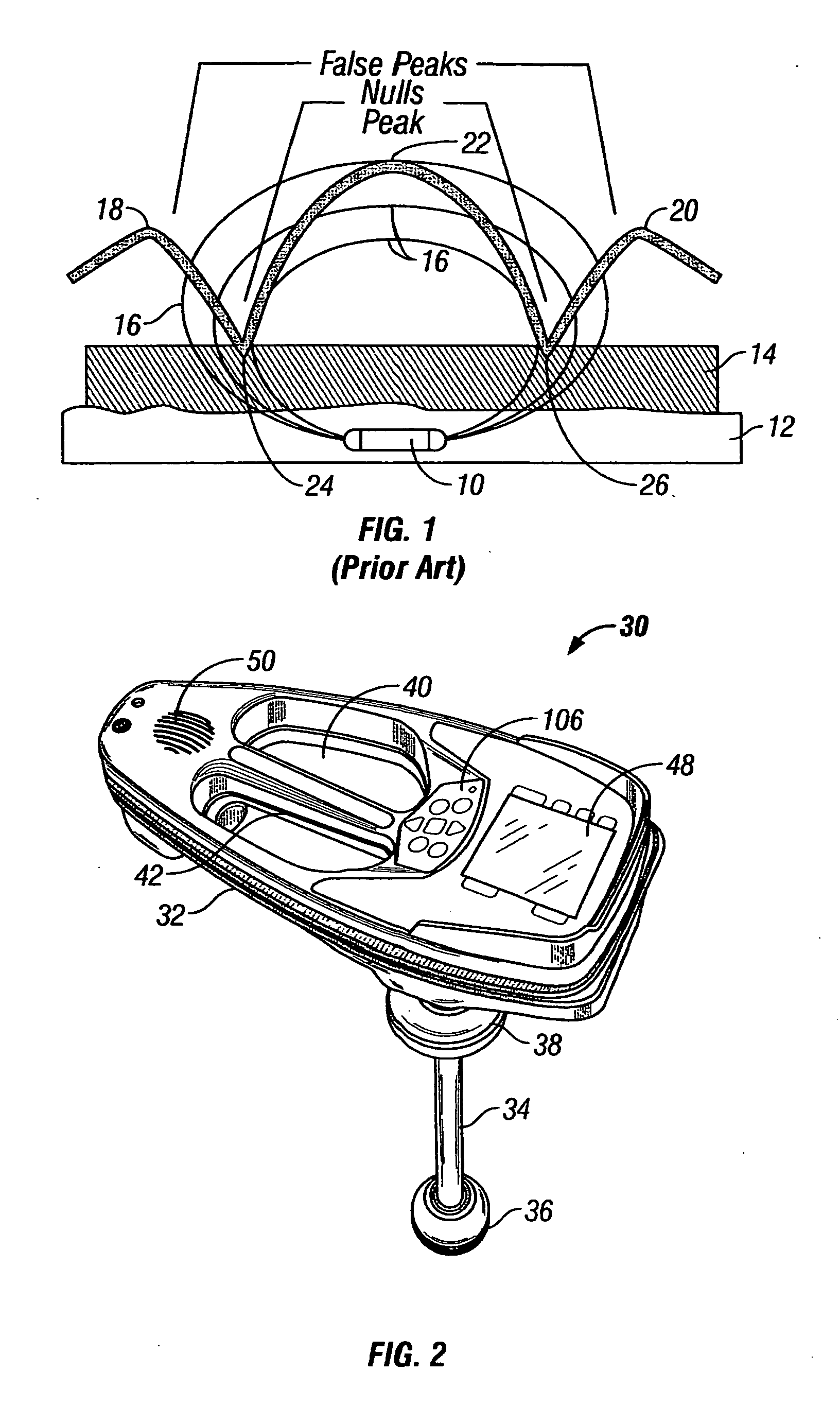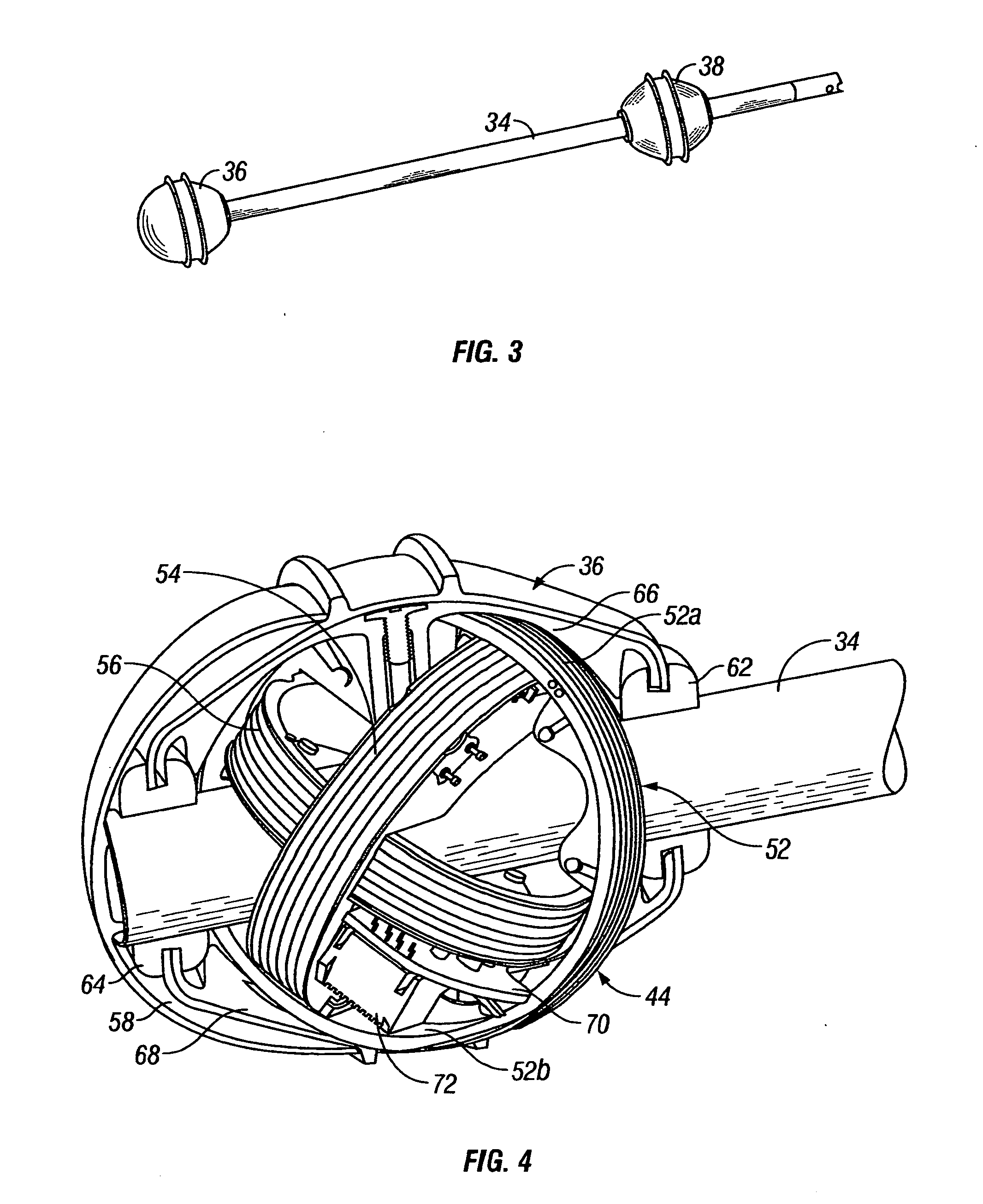Single and multi-trace omnidirectional sonde and line locators and transmitter used therewith
- Summary
- Abstract
- Description
- Claims
- Application Information
AI Technical Summary
Benefits of technology
Problems solved by technology
Method used
Image
Examples
first embodiment
[0054] Referring to FIG. 2, the present invention is illustrated in the form of a battery powered, omnidirectional, manually portable system 30 that is capable of locating a buried object by sensing an electromagnetic signal emitted by the buried object. The system 30 includes a housing 32 and an elongate member 34 (FIG. 3) that supports spaced apart lower and upper sensor balls 36 and 38, respectively, and connects them to the housing 32. The housing 32 (FIG. 2) is made of openable rigid plastic shells having a large central aperture 40 spanned by a handle portion 42.
[0055] Circuit means illustrated in FIG. 6 are mounted partly in the housing 32 and partly in the sensor balls 36 and 38 for sensing an electromagnetic signal in a frequency range of approximately 50 Hz to 500 kHz emitted from a buried object and determining a location and depth of the buried object by measuring signal strength and field angles in three dimensions. This is accomplished utilizing a first lower antenna a...
second embodiment
[0105]FIG. 18 is an enlarged top plan view of a portion of the housing 32 of the second embodiment illustrating its display 48 and keypad 106 and showing an exemplary trace mode MAP view in which the locations of a plurality of different underground utilities are simultaneously visually indicated. A phone utility icon 228 is indicated on the display 48 without the line orientation feature selected. An electric utility icon 230 is indicated on the display 48 with the line orientation feature selected and indicated by a solid bold diagonal line 232. A 60 Hz icon 234 is indicated on the display 48 without the line orientation feature selected. A gas utility icon 236 is indicated on the display 48 without the line orientation feature selected.
[0106] Continuing with FIG. 18, if a sonde is being used, the sonde frequency and level are indicated at a location 238 in the upper left corner of the display 48. No values for the sonde frequency and level are illustrated in FIG. 18. High, medium...
PUM
 Login to View More
Login to View More Abstract
Description
Claims
Application Information
 Login to View More
Login to View More - R&D
- Intellectual Property
- Life Sciences
- Materials
- Tech Scout
- Unparalleled Data Quality
- Higher Quality Content
- 60% Fewer Hallucinations
Browse by: Latest US Patents, China's latest patents, Technical Efficacy Thesaurus, Application Domain, Technology Topic, Popular Technical Reports.
© 2025 PatSnap. All rights reserved.Legal|Privacy policy|Modern Slavery Act Transparency Statement|Sitemap|About US| Contact US: help@patsnap.com



